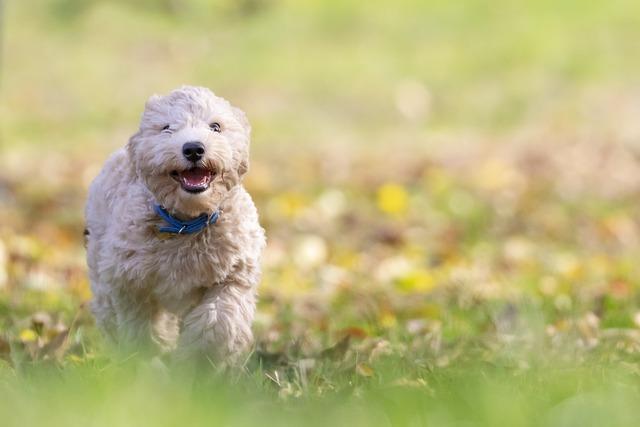Playing with your dog is one of the most joyful aspects of pet ownership, offering both you and your furry friend a chance to bond, exercise, and share some laughter. However, amidst the fun and frolic, it’s essential to ensure that your beloved companion stays safe and injury-free. Just like humans, dogs can experience accidents or strains during playtime, but with a few mindful practices, these can often be avoided. In this article, we’ll explore practical tips and strategies to help you create a safe play environment for your dog, allowing both of you to enjoy every moment together with peace of mind. Whether you’re a seasoned pet parent or new to the world of canine companionship, these insights will help you nurture a happy and healthy playtime routine.
Choosing the Right Toys for Safe Playtime
When selecting playthings for your furry friend, ensuring their safety is paramount. Opt for toys made from durable materials like rubber or nylon that can withstand enthusiastic chewing. Avoid those with small parts that could become choking hazards. Look for toys labeled as non-toxic to ensure they don’t contain harmful chemicals. It’s also wise to choose sizes appropriate for your dog’s breed and size; a toy that’s too small might be swallowed, while an oversized one could be too cumbersome to enjoy.
- Inspect Regularly: Check toys frequently for wear and tear. Discard any that are broken or have sharp edges.
- Supervised Play: Always supervise your dog during playtime to prevent accidents or ingestion of toy parts.
- Interactive Choices: Consider interactive toys that challenge your dog mentally and physically, like puzzle toys or treat dispensers.
By being mindful of these factors, you can ensure that playtime remains a safe and enjoyable experience for your beloved canine companion.

Creating a Secure Environment for Active Dogs
Ensuring your furry friend’s play area is free from hazards is crucial for their safety and well-being. Start by evaluating the space where they play. Look for potential dangers such as sharp objects, unstable surfaces, or toxic plants. Removing these threats is essential in preventing injuries. Consider using soft, durable ground coverings like rubber mats or artificial grass to cushion any falls. Additionally, make sure fences and gates are secure to prevent your dog from wandering into unsafe areas.
Providing the right toys and equipment can also minimize the risk of injury. Opt for toys made of non-toxic materials and ensure they are the appropriate size for your dog’s breed and size. Avoid toys with small parts that could be swallowed or cause choking. When it comes to agility equipment, ensure it’s well-maintained and stable. Regularly check for wear and tear and replace items as needed. By taking these precautions, you can create a safe and enjoyable environment where your dog can play freely and happily.

Understanding Your Dogs Physical Limits
Understanding the unique physical boundaries of your furry friend is crucial in ensuring their safety and happiness during playtime. Each dog, regardless of breed, has its own set of physical capabilities and limitations. Recognizing these limits can help prevent unnecessary injuries. Pay attention to signs of fatigue, such as heavy panting, lagging behind, or frequent stops during play. If your dog exhibits any of these signs, it’s time to give them a break.
- Age and Breed Considerations: Puppies and senior dogs often require shorter, less intense play sessions compared to young adult dogs. Similarly, breeds with short noses, like Bulldogs and Pugs, may struggle with prolonged physical exertion.
- Environmental Factors: Be mindful of the weather conditions. Hot pavement or icy grounds can be harmful to your dog’s paws, and extreme temperatures can lead to overheating or hypothermia.
- Health and Fitness Level: If your dog has pre-existing health issues, consult with a veterinarian to tailor play activities that are both safe and beneficial.
By being attentive to these factors, you can create a safe and enjoyable play environment that respects your dog’s physical limits while nurturing their playful spirit.

Incorporating Rest Breaks to Prevent Overexertion
Ensuring your furry friend enjoys their playtime without the risk of injuries involves more than just choosing the right toys and environment. Incorporating regular rest breaks during play sessions is crucial to prevent overexertion. Dogs, much like humans, need time to recover and catch their breath, especially during intense activities. This practice not only keeps them safe but also helps them build endurance gradually.
- Monitor playtime: Keep an eye on your dog’s energy levels. Signs of fatigue can include heavy panting, slowing down, or a change in gait.
- Scheduled pauses: Introduce short breaks every 10-15 minutes of active play. Use this time to offer water and engage in gentle petting or calm activities.
- Listen to your dog: If they choose to lie down or show disinterest, it’s a clear indication they need a rest.
- Gradual increase: For active dogs, slowly increase the duration of play over time to build their stamina without causing strain.
By thoughtfully integrating these pauses, you ensure your dog’s playtime is both safe and enjoyable, helping to maintain their physical well-being and happiness.

